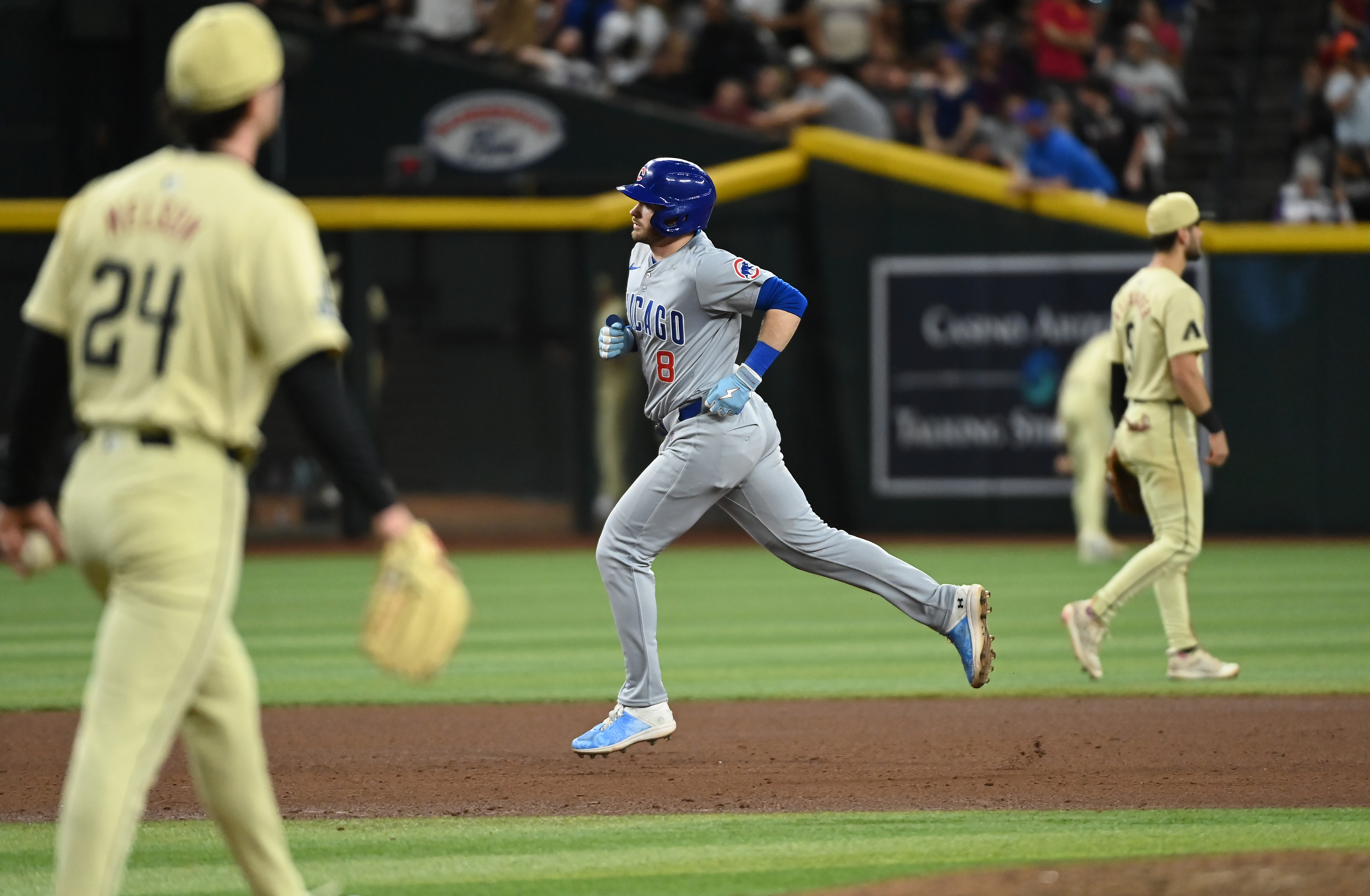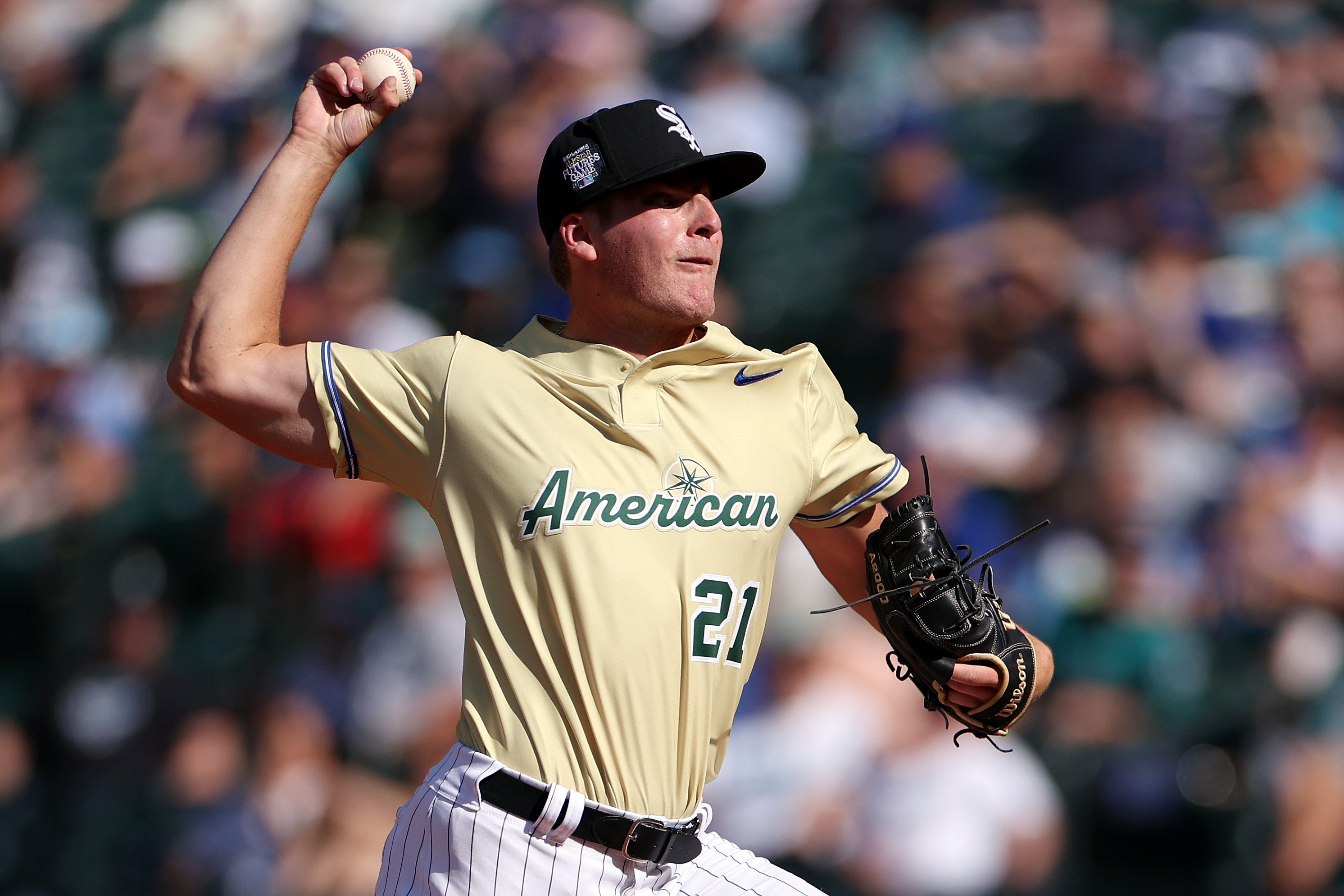
It's finally 2018, and now that New Year's has come and gone, it means baseball can't be too far behind — no matter what the thermometer says.
For the White Sox, 2018 is expected to be a year of patience. That's what Rick Hahn kept saying during last month's Winter Meetings. After those blockbuster trades that bolstered the farm system to best-in-baseball levels, it's time to play the waiting game as all those highly touted prospects develop into the what the team hopes are future stars on the South Side.
Meanwhile, though, the big league team will play its regularly scheduled 162 games. And while the team isn't expected to be a championship contender at this stage in the rebuilding effort, there are plenty of guys on that major league roster looking to carve out their own spot on that team of the future.
Here's a list of five White Sox who have the most to prove in 2018.
Tim Anderson
The 2018 campaign is sure to be an important one for Anderson, who despite mixed reviews among the fan base is a favorite of the White Sox, with the team expecting him to be their shortstop of the future as well as the present. 2017 was a trying year for Anderson, as he spent much of the season dealing with the emotional effects of the death of his best friend, a perfectly acceptable reason for a player to not be at his best on the field. Anderson finished 2017 with a .257/.276/.402 slash line, numbers well below what he put up in 99 games during his rookie season in 2016. But in 175 more plate appearances in 2017, Anderson had 35 more hits, eight more home runs and 26 more RBIs than he did in his first year on the South Side, and he stole five more bases, too.
MLB
Most troubling, perhaps, was his fielding, which saw him commit a whopping 28 errors, far and away the most in baseball, eight more than the next player on that unenviable leader board. But there was measurable improvement as the season progressed. His errors were heavily concentrated in the early part of the season, and he committed just six errors over the teams final 72 games. Still, had he committed zero errors over the final 72 games, he still would've finished the season with the most errors in baseball.
But just like the cleaned-up fielding created some promise for 2018, so too did Anderson's offense. Over the season's final month, he slashed .327/.345/.469 with nine extra-base hits including a trio of homers and 20 runs scored.
In 2018, Anderson needs to get the errors way down and would be well served to adjust the walk-to-strikeout numbers at the plate. He walked just 13 times last season — especially concerning considering it was the same number of walks he had in 2016, when he had 175 fewer plate appearances — and struck out 162 times, the 12th-highest total in the American League. While the rest of the White Sox starting lineup of the future continues to develop in the minors, the further-along Anderson needs to prove he really is the shortstop of the future by succeeding at the big league level.
Carlos Rodon
It will of course be difficult for Rodon to prove himself if he's not on the mound, though that's the point. For the second straight season, Rodon could miss a huge chunk of the campaign with an injury, and that fact should throw into question whether he's a part of the projected rotation of the future or not.
The White Sox spent the third pick of the 2014 draft on Rodon, and he reached the big leagues quickly, starting 23 games in 2015 and 28 more in 2016. But his ERA has risen in each of the past two seasons, climbing from 3.75 in 2015 to 4.04 in 2016 and 4.15 last year. Rodon had some dazzling moments in 2017, recording double-digit strikeouts in three of his 12 starts — including an 11-strikeout performance in just four innings against the Cubs. And coming off of that game against the North Siders, he turned in a 3.00 ERA over his final seven starts of the season before getting shut down with a shoulder injury.
So obviously health will be the main talking point surrounding Rodon heading into the 2018 season. As recently as the Winter Meetings earlier this month, general manager Rick Hahn had no update on Rodon's status, sticking to the same prognosis that was given after Rodon had surgery in September: that Rodon could be ready for Opening Day or not be back until June. Last season, Rodon was knocked out during spring training with an arm injury that kept him out of the rotation until late June. The fact that Rodon could miss multiple months in back-to-back campaigns has to be of concern. And while the influx of so much young pitching talent into the organization over the past year plus (Michael Kopech, Reynaldo Lopez, Lucas Giolito, Alec Hansen, Dane Dunning, Dylan Cease) might make it easier to envision a future rotation without Rodon, the No. 3 pick in the draft turning into another injury waiting to happen would be a tough thing to swallow.
And so what Rodon needs to prove in 2018 is that he can get healthy and stay healthy. With all the talent on the way from the minor leagues, can Rodon maintain his place in the rotation if questions about his health still exist going into 2019? Pitching his way out of that uncertainty is the only way to assure fans and the team that he's part of the future plans.
Avisail Garcia
Garcia was, hands down, one of the best hitters in the AL last season. It's an important thing to remember considering it's been a long wait for him to reach that level. Garcia's been playing big league ball since 2012 but struggled to reach high expectations until last season, when he slashed .330/.380/.506, ranking second in the AL in batting average and sixth in on-base percentage.
But finally arriving and proving you can do it again are two very different things. Garcia's task in 2018 is to show that he's no one-year wonder — a necessity for his future and the White Sox future.
There could be a lot riding on Garcia's ability to repeat his 2017 success. Under team control for the next two years, his long-term status with the team remains undetermined. But perhaps more interestingly, if Garcia is able to replicate his offensive success from a year ago, the White Sox could trade him and add even more young talent to their rebuilding effort. Or he could prove himself a key part of the future (he's only 26, after all) and earn himself an extension from the White Sox.
Garcia has already proved he's got it in him, now he needs to prove he can do it consistently.
Matt Davidson
Where does Davidson fit into the White Sox future plans? That's a mighty difficult question to answer. Last season was Davidson's first full one in the majors. He played 31 games with the Arizona Diamondbacks way back in 2013 and then just one with the White Sox in 2016 before playing 118 games in 2017. Even that's not exactly a "full" season, but injury woes had something to do with that.
We know what Davidson can do: hit home runs. He belted 26 of them last year, good for second on the team, trailing only Jose Abreu, who was one of the best hitters in the AL. Though for all of Davidson's power, there was still plenty left to be desired. He posted just a .452 slugging percentage, more than 50 points lower than Garcia, who hit eight fewer home runs. Davidson hit fewer doubles than both Yolmer Sanchez and Kevan Smith. He was just fifth on the team in total bases and had a woeful .260 on-base percentage. Among AL hitters, only Rougned Odor of the Texas Rangers appeared in as many games as Davidson and posted a lower on-base percentage.
Stack all those numbers up, and it might be difficult to see a place for Davidson among the lineup of the future. And that's why he's got a lot to show in 2018. Right now, his numbers show him as a very one-dimensional player. His power is a plus, of course, and he was one of just two White Sox hitters to cross the 20-homer mark in 2017. But his walk-to-strikeout numbers are just as bad as Anderson's. Davidson walked just 19 times last year, striking out 165 times, the 10th-highest total in the AL. Davidson needs to show he's a more well-rounded hitter if he's going to stick around for when the White Sox become a contender.
Carson Fulmer
Fulmer will almost surely be given a chance to open the season as one of the White Sox five starting pitchers. But the question isn’t whether he crack the 2018 rotation, it’s whether he can crack the 2020 rotation.
Like the aforementioned Rodon, Fulmer was a high pick before the rebuilding effort got underway, the eighth selection in the 2015 draft. He hasn’t received the same major league exposure as Rodon, though, just 15 games scattered over the past two seasons, with only five of those being starts.
But Fulmer sure did show some promise this past September, making four starts over the final weeks of the 2017 campaign. One of those lasted just 20 pitches, but in the other three, he combined to surrender just three runs in 17 innings, striking out 16 hitters. Considering he had a 40.50 ERA after one August spot start during a doubleheader, to finish 2017 with a 3.86 ERA was a positive development.
With rotation spots claimed by James Shields, Giolito and Lopez heading into the 2018 season, even the addition of a flippable veteran leaves one spot open for Fulmer (considering Rodon might be sidelined until summer with his latest shoulder injury). The likes of Kopech, Hansen, Dunning and Cease will all be developing in the minors this year, giving Fulmer an opportunity to impress the White Sox at the big league level. And with that opportunity comes necessity for Fulmer: to prove he’s capable of sticking as a long-term piece in what could be a crowded future rotation.
This is finally Fulmer’s moment after a couple seasons' worth of middling results in the minors: 4.63 ERA with both Double-A Birmingham and Triple-A Charlotte in 2016, 5.79 ERA with Charlotte in 2017. He’ll have plenty of time to prove himself during a season in which the White Sox aren’t expected to compete. But he might want to do it sooner rather later considering the talent that could make its way up from the minors.







